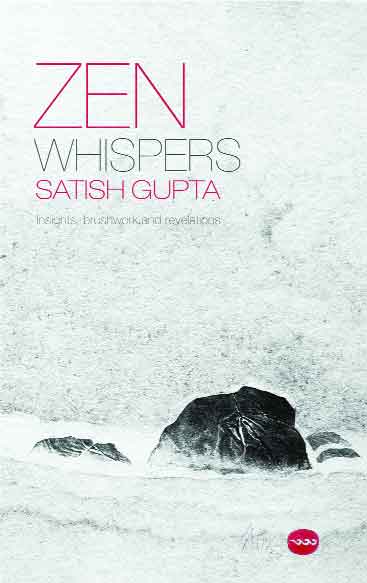When you tread on the terrain of Satish Gupta’s Zen Whispers, it envelopes you in a mix of contemporary and traditional genres, says Uma Nair
Cute and quaint in terms of a culling of statements, Satish Gupta’s Zen Whispers is a representation of his many journeys in art as well as life. We get a glimpse into the Zen monk and artist who embodies the Buddha within.
The book, which was launched a week ago at the Visual Arts Gallery, is replete with paintings and sculptures from different periods of Satish’s artistic endeavours that covers works selected from his monumental landscapes series — wave scene series, flower series. This leads to a deep understanding of his artistic developments during the past 25 years for the audience of art and readers alike.
Pauses and spaces
While the book’s cover has been treated and designed like a Zen masterpiece, the book is full of pauses and spaces. Satish emerges as an artist who is an itinerant traveller with a thorough knowledge of the past and the present, the East and the West. Interestingly, the designing and arrangement of the chapters in the book are loose and candid, also filled with the language of assonance and allusion, perhaps almost like going beyond the senses or the colours into a utopian realm that melds and melts into the absolute.
The work indicates Satish’s deep understanding of design and his in-depth contemporary awareness derived from his experiences of understanding art practices that straddle through both the Eastern and the Western worlds. The book showcases a variety of genres. Satish gradually develops his own artistic language by infusing Chinese contexts with a minimalist rendering of contemporary awareness. This distinctive style gains him critical acclaim and we look at his small word scapes in new dimensions.
Inner realms
The signature of antiquity in the paintings echoes the monumentality of inner realms, giving viewers an impression that they are not the works of a contemporary artist but a man who straddles through many realms. After studying them meticulously, one will, however, notice that Satish deliberately breaks away from the practice of contemporary art and instead uses world practices.
To remain still is one of the qualities that the Eastern philosophy teaches when facing the rapidly-changing world and we get an aura of stillness when we read through. The words are soothing yet delicate. Behind his meticulous thoughts, which portray a discipline inherited from tradition, there are innovative and ingenious experiments. Satish creates a synergy by his seamless intertwining of tradition and the avant-garde both in his words as well as his paintings. Just after reading a few pages, it feels like we are being introduced to fantasies on paper and enchantment in the verbal world. The visual richness comprises colour splashes and bold strokes. We can gain multiple moments of silence through the pages, understanding the traditional aesthetics of both concept and imagery — the kinetics of consciousness also come into play — and you realise that silence is the source of his inspiration.
Universal cultures
Satish’s paintings are awash with the spirit of universal, traditional cultures, but they also go far beyond the conventional boundaries of ink/watercolour painting, exuding an aura that is both spiritual and filled with mystery. His words, thoughts and works are a mix of genres — Indian and international, traditional and contemporary. The sculptures are mesmerising if not filled with a dense gravitas.
This book tells us that the tides of the universe are in our veins and nature’s peace flows around us. The sea is emotions incarnated for Satish, and we have to travel, stop and look at the waves to know and understand the beauty of the sheer surging of life, and the tidal wave of Being. The sinuous strokes of black and white embody the perfect joy of each separate muscle, joint and sinew in that it is everything that mirrors the waves and the soil and the sea. The book tells us that in life, nature is aglow and rampant, expressing itself in movement and we must be protectors as well as nurturers of the Earth and its bounty.
The rhythmic quality of the words resonates with the artist’s underlying statements. The inner spirit of the paper used becomes the beauty of painting and the enchantment of the moment is the passion inherent. All great works of art and books have one thing in common — they touch hearts universally, across time and boundaries.


























